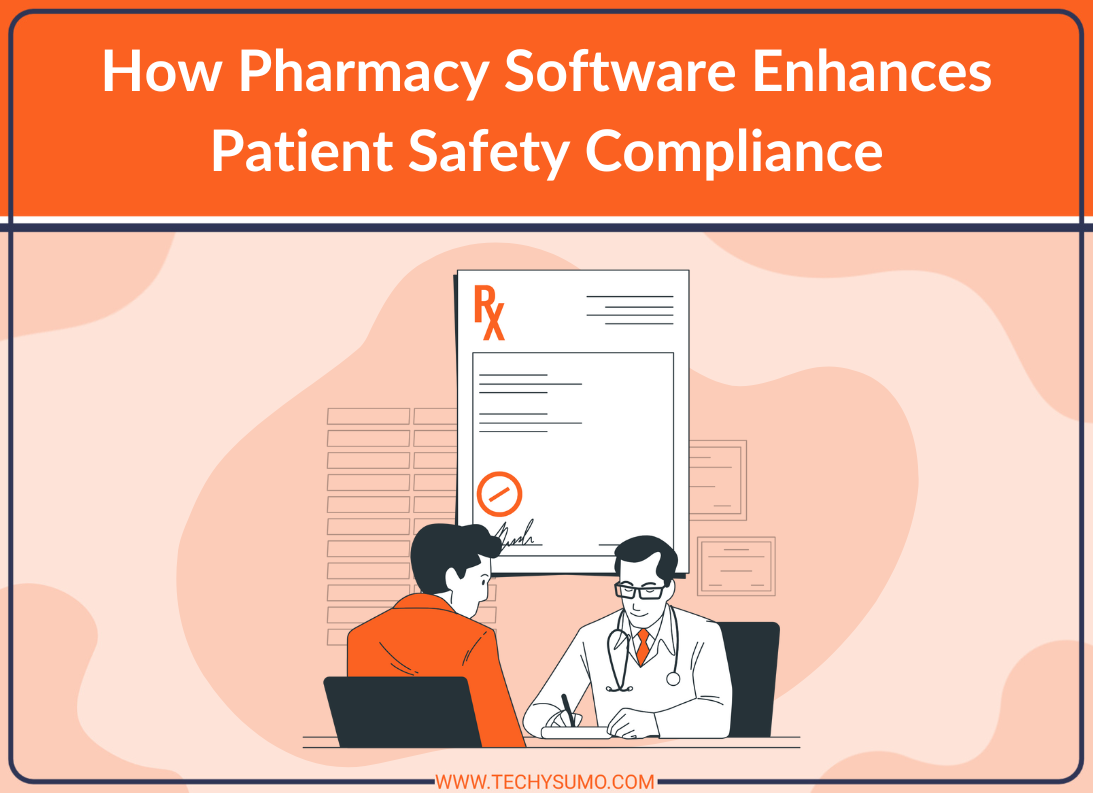Patient safety is essential in the pharmaceutical industry. Though it’s certainly a mandatory obligation for pharmacies, it’s also a matter of trust between them and their customers. Every day, pharmacies handle numerous prescriptions, and all of them foster customers’ well-being. A single error can lead to numerous problems, including adverse reactions, treatment failures, or even life-threatening complications. Complying with industry regulations helps to ensure patient safety while also protecting pharmacies from the potential repercussions of avoidable errors.
There’s little denying that the pharmaceutical industry has evolved over time. More medical conditions have been discovered, and new medications are constantly becoming available to patients. Treatments are becoming more complex and personalized as well. On top of that, new industry regulations are continually coming into play. That presents quite a few challenges for pharmacies, but pharmacy software from Outcomes can make managing those hurdles much simpler and more effective.
Table of Contents
Automating Screening Processes
For one, pharmacy software conducts automated screening processes to keep track of medication interactions, contraindications, allergy alerts, and many other potential problems. It automatically flags possible safety concerns before medications are given to customers. It has extensive databases of medications, dangerous interactions, and additional factors. By cross-referencing that data with patient information, it can pinpoint dangerous combinations that physicians and pharmacists might miss.
These automated screening processes also cover other important details, such as dosage verification. Pharmacy software can compare prescribed doses to established recommendations for treating different conditions based on patients’ weight, age, and other variables. That aids in catching medication and dosage errors before they have a chance to cause harm. Those are only a few of the points pharmacy software covers in its screening processes.
Streamlining Pharmacy Workflows
Specialized software can also improve workflows in pharmacies. It automates many of the processes pharmacy technicians and pharmacists would otherwise have to complete manually, such as inventory management, prescription processing, flagging expired medications, updating patient information, and dosage verifications to name a few.
Also Read
In streamlining workflows, pharmacy software can reduce the likelihood of dangerous mistakes. It also gives staff members more time to focus on customer service, patient education, and other tasks that can’t be automated. This software can offer reporting and analytics capabilities, audit trails, and a variety of other features as well.
Ensuring Regulatory Compliance
That brings us to regulatory compliance. Pharmacy software’s automated tracking, documentation, and reporting features can go a long way toward ensuring compliance. It automatically generates the reports that certain regulatory agencies require, so pharmacies have in-depth records to provide when needed. It also automates that process to ease the burden on pharmacy staff members and reduce the risks of mistakes and oversights.
Protecting Patients and Pharmacies
There’s no denying that healthcare has changed over time. It’s continually becoming more intricate, and many of the changes and complications are impacting pharmacies. They’re making patient safety and regulatory compliance ever more important but also increasingly difficult to maintain. Fortunately, tools have been developed to help pharmacies keep pace.
Pharmacy software is enhancing patient safety in many ways. It automates many of the tasks involved in verifying and filling prescriptions and ensuring they pose no risks of adverse reactions. It also reduces human error and streamlines pharmacy workflows to give staff members more time to focus on their customers. Along the way, it uses its extensive databases and reporting capabilities to help pharmacies remain in compliance with ever-growing and changing industry regulations to protect them and their patients.






